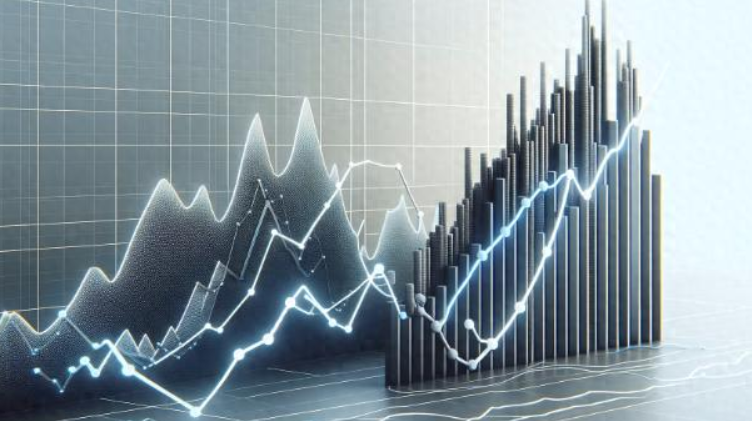Investment Topics
127 Comments
Investors Rush to Buy Options for Hedging
Advertisements
Amidst a backdrop of growing uncertainty in U.S.economic policy,a noteworthy development has begun to unfold within the financial markets.Both retail and institutional investors are flocking to the derivatives market,specifically targeting options that shield against surging volatility in stock prices.This behavior is underpinned by mounting concerns regarding the trajectory of the U.S.economy and an acute awareness of potential risks that could disrupt market stability.
While a significant portion of investors maintains a long-term view that the incoming government's policies will invigorate corporate growth and profitability—ultimately driving stock market gains—the current landscape of erratic trade and economic policies has caused unease among some.These investors recognize that an abrupt policy shift could spark violent market swings,leading to unpredictable losses.In response,a growing number of market players are proactively seeking protection for their equity portfolios through the derivatives market,aiming to guard against what they perceive as a looming “surge in volatility.” This hedging tactic against low-probability but high-impact events,commonly referred to as “tail risk,” starkly highlights the unsettling effect that U.S.policy instability has on the markets.
Analyzing Wall Street's current performance reveals that volatility indicators remain at low levels,with the stock market reflecting a modest upward trend since last year.The S&P 500 Index has climbed approximately 3% since the beginning of 2024,painting a picture of apparent prosperity and stability.Yet beneath this calm surface lies an undercurrent of anxiety.Mandy Xu,head of derivatives market intelligence at Cboe Global Markets,states,“If you are a fund manager,will you adjust your entire portfolio based on a single news headline?You cannot,because you don’t know if that headline will persist.So what do you do?You use options.” Options,financial instruments granting holders the right to buy or sell stocks at predetermined prices,offer investors a versatile means of managing risk.In the face of policy uncertainty,while investors cannot swiftly adjust their entire portfolio,they can purchase options,thereby gaining a certain level of protection as market volatility approaches.
Xu further elaborates,“People are feeling anxious and are looking for tail risk hedges.” This mounting anxiety is not unfounded.Maxwell Grinacoff,head of U.S.equity derivatives research at UBS,notes that whenever the VIX index—commonly referred to as Wall Street’s “fear gauge”—soars,the volume of related options contracts tends to “skyrocket.” Cboe data indicates that although the VIX itself lingers well below its long-term average,a rush to purchase these options has driven their prices close to historical highs.This phenomenon underscores that even in a seemingly calm market,investors' apprehensions about potential risks are propelling them to pay premium prices for options that protect against future volatility.
Moreover,Xu observes that if the blue-chip S&P 500 index were to experience a sharp decline,the demand for related options would also significantly surge.Rocky Fishman,a derivatives analyst at Asym 500,explains,“Volatility conditions can change rapidly,making it harder for investors to wait for a sell-off to implement protective measures.Thus,even when the market is strong and volatility indicators are low,the pricing of tail risk hedging strategies remains elevated.” Investors are acutely aware that market fluctuations can occur in an instant, and missing the opportunity to hedge before volatility erupts can lead to immense financial losses.
and missing the opportunity to hedge before volatility erupts can lead to immense financial losses.
 and missing the opportunity to hedge before volatility erupts can lead to immense financial losses.
and missing the opportunity to hedge before volatility erupts can lead to immense financial losses.From the perspective of investor demographics,the demand for options that provide payoffs if the S&P 500 index declines tends to be driven primarily by retail investors.In contrast,institutional players such as hedge funds,pension funds,and asset management firms are more inclined to purchase VIX call options.Retail investors have been particularly active in this wave of options buying,even delving into higher-risk,short-term derivatives.While these short-term instruments potentially offer high rewards,they can become worthless if target prices are not realized swiftly.On January 31,market anxiety surged instantly when the new U.S.government threatened to impose tariffs on some of America’s largest trade partners.The trading volume for “zero-day” contracts tied to the S&P 500 skyrocketed to a record 2.4 million.Zero-day contracts refer to options traded the day before or the day they expire,carrying high risk,but also presenting substantial profit potential or risk mitigation during market upheavals.
Charlie McElligott,a derivatives strategist at Nomura Securities,asserts that recent weeks have seen exceptionally robust retail demand reminiscent of the meme stock frenzy during the COVID-19 pandemic,when a plethora of retail investors made their entry into the stock market,propelling the prices of underdog stocks to unprecedented heights.The current lively engagement of retail investors within the options market similarly underscores their concerns regarding market unpredictability and attempts to circumvent risk through high-stakes investment maneuvers.
Leave A Comment